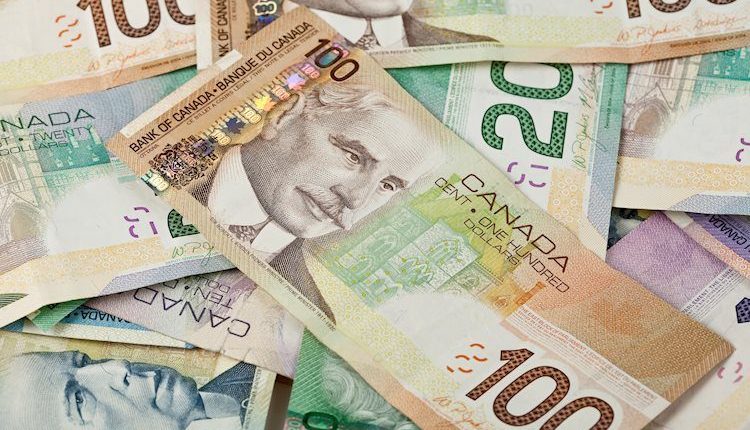- Loonie is tracking crude barrel prices, USD closely.
- Canada GDP is expected to see sluggish growth.
- Canadian inflation remains sticky, keeping the BoC on its toes.
The Canadian Dollar (CAD) is seeing minor gains against the US Dollar (USD) on Thursday as the Greenback eases off from recent gains. With Oil barrel prices also taking a quick breather, and crude Canada’s main export, the CAD is seeing limited momentum. The USD/CAD is largely flat for Thursday, down a scant 0.2% at its lowest point as the pair threatens consolidation near 1.3500.
Canada’s economic data remains thin on the calendar, with Friday’s Gross Domestic Product (GDP) figures closing out an otherwise data-empty trading week. Canadian GDP for the month of July is forecast to print a meager 0.1% versus the previous month’s -0.2%. Oil prices and the broad-market US Dollar Index (DXY) are set to remain the CAD’s main drivers on the charts.
Daily Digest Market Movers: Canadian Dollar twisting into the middle
- The CAD gained nearly 2.3% against the USD in September, bolstered by scorching Oil prices.
- The USD/CAD is currently down 1.5%, with surging DXY winning the head-to-head battle with crude barrel prices in the near term.
- Canadian GDP is seen struggling to firm up growth as stubborn inflation remains.
- Bank of Canada (BoC) officials have been routinely hitting the wires trying to jawbone inflation lower with threats of higher interest rates.
- The BoC’s Governor Macklem and Deputy Governor Kozicki have made appearances, reiterating calls for rates to remain higher for longer as inflation still remains too high.
- Canada was the world’s second-largest oil exporter in Dollar-adjusted terms, exporting over $120 billion USD of crude in 2022, nearly 9% of the entire global oil export market.
- One of the top oil exporting countries globally, the Loonie sees a majority of its momentum dictated by barrel prices.
Technical Analysis: Canadian Dollar
The Canadian Dollar (CAD) has gained against the US Dollar (USD) from September’s peak in the USD/CAD near 1.3695, and is set to close out the month near where it started at 1.3500, if directional momentum remains elusive heading into the final days of September’s trading.
The USD/CAD is currently pinned to the 34-day Exponential Moving Average (EMA) at the 1.3500 handle, with near-term support from the 200-day Simple Moving Average near 1.3450. A floor is priced in from the last swing low into 1.3380, while 1.3650 remains a significant technical resistance barrier that has rejected price action multiple times this year.
Canadian Dollar FAQs
The key factors driving the Canadian Dollar (CAD) are the level of interest rates set by the Bank of Canada (BoC), the price of Oil, Canada’s largest export, the health of its economy, inflation and the Trade Balance, which is the difference between the value of Canada’s exports versus its imports. Other factors include market sentiment – whether investors are taking on more risky assets (risk-on) or seeking safe-havens (risk-off) – with risk-on being CAD-positive. As its largest trading partner, the health of the US economy is also a key factor influencing the Canadian Dollar.
The Bank of Canada (BoC) has a significant influence on the Canadian Dollar by setting the level of interest rates that banks can lend to one another. This influences the level of interest rates for everyone. The main goal of the BoC is to maintain inflation at 1-3% by adjusting interest rates up or down. Relatively higher interest rates tend to be positive for the CAD. The Bank of Canada can also use quantitative easing and tightening to influence credit conditions, with the former CAD-negative and the latter CAD-positive.
The price of Oil is a key factor impacting the value of the Canadian Dollar. Petroleum is Canada’s biggest export, so Oil price tends to have an immediate impact on the CAD value. Generally, if Oil price rises CAD also goes up, as aggregate demand for the currency increases. The opposite is the case if the price of Oil falls. Higher Oil prices also tend to result in a greater likelihood of a positive Trade Balance, which is also supportive of the CAD.
While inflation had always traditionally been thought of as a negative factor for a currency since it lowers the value of money, the opposite has actually been the case in modern times with the relaxation of cross-border capital controls. Higher inflation tends to lead central banks to put up interest rates which attracts more capital inflows from global investors seeking a lucrative place to keep their money. This increases demand for the local currency, which in Canada’s case is the Canadian Dollar.
Macroeconomic data releases gauge the health of the economy and can have an impact on the Canadian Dollar. Indicators such as GDP, Manufacturing and Services PMIs, employment, and consumer sentiment surveys can all influence the direction of the CAD. A strong economy is good for the Canadian Dollar. Not only does it attract more foreign investment but it may encourage the Bank of Canada to put up interest rates, leading to a stronger currency. If economic data is weak, however, the CAD is likely to fall.
Read the full article here

